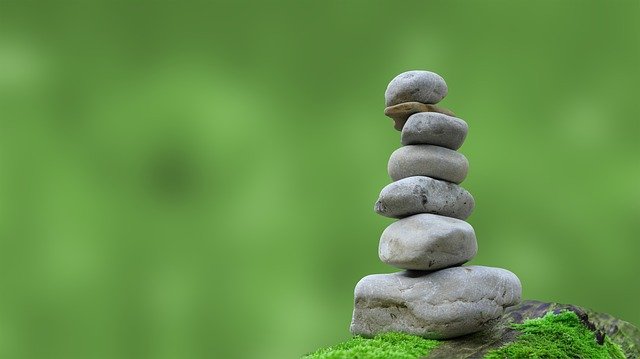Explaining Flow: How “Getting in the Zone” Can Help with Mental Wellness

Have you ever been “in the zone” with a project? Or you sat down to do something you love and somehow the ideas just seemed to come to you on their own?
There’s a word for that: “flow.”
There’s been a lot of research about flow and “flow state,” but happiness expert Mihaly Csikszentmihalyi first coined the term 40 years ago and has been doing research on it ever since.
As a provider of behavioral health services, we’re interested in how flow and mental health are related. There are positive effects of flow aside from simply being more productive; because of that, we investigated how you can work on getting to flow state with your passion projects.
What Is Flow?

Mihaly Csikszentmihalyi, original proponent of the concept of flow
According to Csikszentmihalyi’s research in 1990, flow is “a state in which people are so involved in an activity that nothing else seems to matter; the experience is so enjoyable that people will continue to do it even at great cost, for the sheer sake of doing it.”
While someone is in this state of flow, “There’s this focus that, once it becomes intense, leads to a sense of ecstasy, a sense of clarity: you know exactly what you want to do from one moment to the other; you get immediate feedback,” Csikszentmihalyi said in a 2004 Ted Talk.
Flow state has been called many things by many people, including artists, creatives, athletes, and musicians. They all report these same feelings of being hyper-focused and having clarity—as if the ideas and actions weren’t from their own thoughts, but some external force.
Positive Psychology succinctly lists eight defining characteristics of flow state:
- Complete concentration on the task
- Clarity of goals and reward in mind and immediate feedback
- Transformation of time (speeding up/slowing down)
- The experience is intrinsically rewarding
- Effortlessness and ease
- There is a balance between challenge and skills
- Actions and awareness are merged, losing self-conscious rumination
- There is a feeling of control over the task
Someone doesn’t have to experience all eight characteristics to be in flow, but they will experience at least one and probably more.
What Does Flow Have to Do with Mental Health?

When people experience flow state, they are happier and more satisfied with life. The BBC reports that “flow is associated with subjective well-being, satisfaction with life and general happiness.”
People who can achieve flow state are not only more likely to be happy, but also less likely to experience the negative side effects from unmanaged mental health issues: “The thoughts and feelings that generally cloud our minds, such as stress, worry, and self-doubt, take a back seat when we achieve a flow state” (Headspace).
These are certainly encouraging ideas, and recent neuropsychology studies have shown that the brain is actually changing during flow state. Researcher Arne Dietrich notes that the prefrontal cortex, which normally controls our complex cognitive processes like self-reflection and conscious state of mind, seems to work differently during flow state.
His research shows, “In a state of flow, this area is believed to temporarily down-regulate in a process called transient hypofrontality. This temporary inactivation of the prefrontal area may trigger the feelings of distortion of time, loss of self-consciousness, and loss of inner critic. Moreover, the inhibition of the prefrontal lobe may enable the implicit mind to take over, allowing more brain areas to communicate freely and engage in a creative process.”
When someone experiences flow, they might feel like time passes differently, feel less inhibited by their inner critic, and be less self-conscious. Dietrich’s scientific findings line up with Csikszentmihalyi’s eight defining characteristics of flow state. Moreover, some of the problems faced during times of mental health crisis include harsh internal criticism and extreme self-consciousness. Therefore, getting into flow state could help people become better able to handle mental health challenges and ultimately increase mental wellness.
How to Get into Flow State

While flow state seems obviously desirable, it’s not always an “easy” goal to achieve. As artists know well, “there’s a stereotype that writers and creatives can enter the zone at will—that we sit down at our laptops and the world melts away” (BBC).
There are conditions you can create to make flow state more likely, but unlike a light switch, you can’t always turn it on and off. You must know yourself and what your optimal environment is in order to start creating the perfect conditions.
The BBC notes, “We are more likely to access the flow state when engaged in tasks we’ve already practiced.” So it helps if you are doing something you’re already familiar with.
The wellness app Headspace notes four conditions that need to be met to achieve flow state:
- You need to care about the task at hand
- The activity, job or task cannot be too easy or too difficult
- Optimally, the activity should be something that you are good at
- Your mindset surrounding the task should be focused on the journey, not the destination
Don’t let the short list deceive you—it’s a near-perfect combination that gets you to flow state. Looking at the conditions, it makes sense why creatives are thought to be able to turn on flow state at will. It also makes sense how athletes can enter flow state even though they’re doing something completely different than creatives.
If this list seems hard to accomplish, don’t be discouraged just yet. There are also some things you can do that will help you get to flow state: “Do something you love, create a ritual, choose your most important task, identify your peak creative and productive times, & eliminate distractions.”
Creating an environment that’s predictable and free of distractions can really help you change your mindset and delve deeper into your passion project.
Ultimately, flow state can greatly benefit your mental wellness through added happiness and lessened stress and anxiety. Not to mention the positive boost you will get from being so productive.
If you’re struggling with mental wellness, we would encourage you to do some self-reflection. Figuring out your passions and how to make daily or weekly time for them can be a great help in making positive mental health changes in your life.
If you need help figuring out how to manage your mental wellness, Cummins Behavioral Health offers many types of therapy and counseling services. From individual therapy to group therapy options, our skilled professionals can help you improve your mental health. They could even help you discover your passion so you can get to flow state and take advantage of the benefits. If you’re interested in getting help, call (888) 714-1927 today. You can lead a happy and balanced life!

Interested in more wellness-related topics? Here are some other blog posts you might enjoy!
